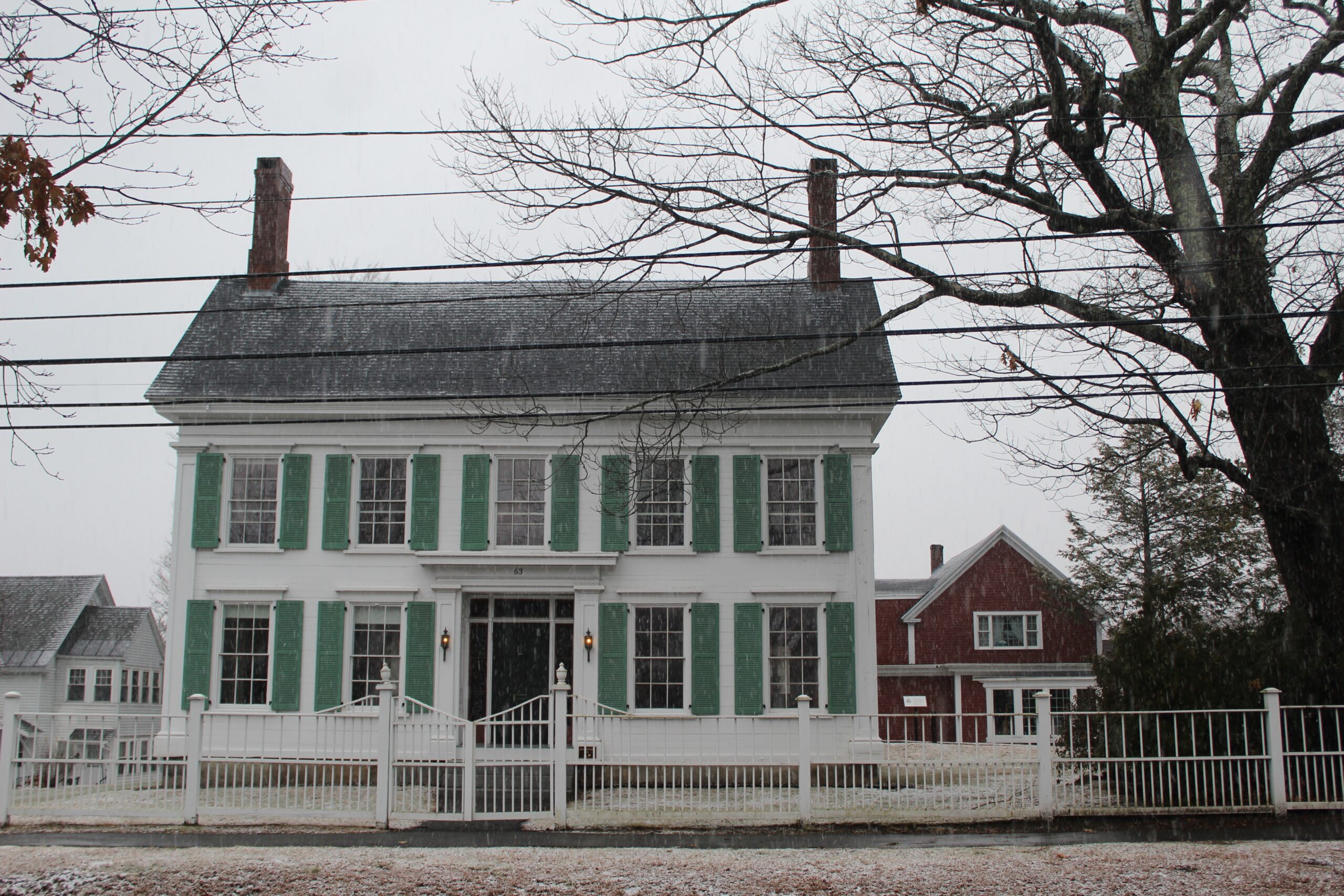Professor Chakkalakal works to reignite interest in the Harriet Beecher Stowe House
December 6, 2024
 Carolina Weatherall
Carolina WeatherallUnbeknownst to many, within the white house with green shutters at 63 Federal Street in Brunswick, one of the most consequential novels in American history was written.
This house is none other than the former residence of the author Harriet Beecher Stowe, who lived in Brunswick from 1850 to 1852 when her husband, Calvin Stowe, was a professor at the College. During that time, she wrote her masterpiece, “Uncle Tom’s Cabin,” a bestselling anti-slavery novel that Abraham Lincoln reportedly stated was responsible for starting the Civil War.
After the Stowes moved out, the house went through periods as a private residence, restaurant and hotel before being purchased by the College in 2001. However, this was not done with the intent of preservation, but rather to better accommodate the purchase of Stowe Inn located behind the house to serve as a dorm.
In 2008, when current Associate Professor of Africana Studies and English Tess Chakkalakal, who wrote her dissertation on “Uncle Tom’s Cabin,” arrived at the College, she quickly recognized the significance of the structure that was lying unused.
“I started to think about how the house could commemorate Stowe’s legacy here in Brunswick and also her impact on our college,” Chakkalakal said. “I started to lead a little campaign among faculty and students in developing awareness.… I understand this as part of my scholarship, not just writing books and teaching students, but making my own interest in Stowe accessible and knowable to the general public.”
Chakkalakal began conducting research on the house, creating a digital timeline of its history with a student. Along the way, she made a major discovery—Stowe had once harbored a runaway slave within the building, named John Andrew Jackson. This resulted in the house being named a National Underground Railroad Network to Freedom site. The College subsequently committed to providing funds for its renovation. Though most of the house was turned into offices for faculty on sabbatical, Stowe’s writing room was left to be turned into a permanent exhibit.
“I worked with architects, and we put together a committee to figure out how the writing room would look, because we wanted to show people what happened here,” Chakkalakal said. “The rooms were the same, but [no objects] were preserved from when [Stowe] was here.… So it’s about retelling the story of when she was here and the significance of the house.”
Today, “Harriet’s Writing Room” is available to all Bowdoin students and on a by-appointment basis to the public. It features writing on the walls explaining the history of Stowe, the house and “Uncle Tom’s Cabin,” furniture authentic to the time period and a miniature library above the fireplace filled with literature related to Stowe.
Chakkalakal has brought activity to the house and writing room recently by taking students there as part of her current class, Reading “Uncle Tom’s Cabin” and covering it in a podcast called “Dead Writers” that she co-hosts with Professor of English Brock Clarke on writers’ homes. Still, Chakkalakal hopes to do more with the space. Before Covid-19, regular Stowe-related events open to students and the public were held in the writing room, and a student-led club called the Stowe Writers Collective met there to write and share work with each other. All this ended during the pandemic and has not started up again, but Professor Chakkalakal is attempting to restore the club.
“I’d like to open the house up a bit more frequently to the public,” Chakkalakal said. “I’m hoping in 2025, we restart some of the programs that we had going before Covid. That’s really my New Year’s resolution, and I would love help [from students].… I want it to be social and fun.”

Comments
Before submitting a comment, please review our comment policy. Some key points from the policy: